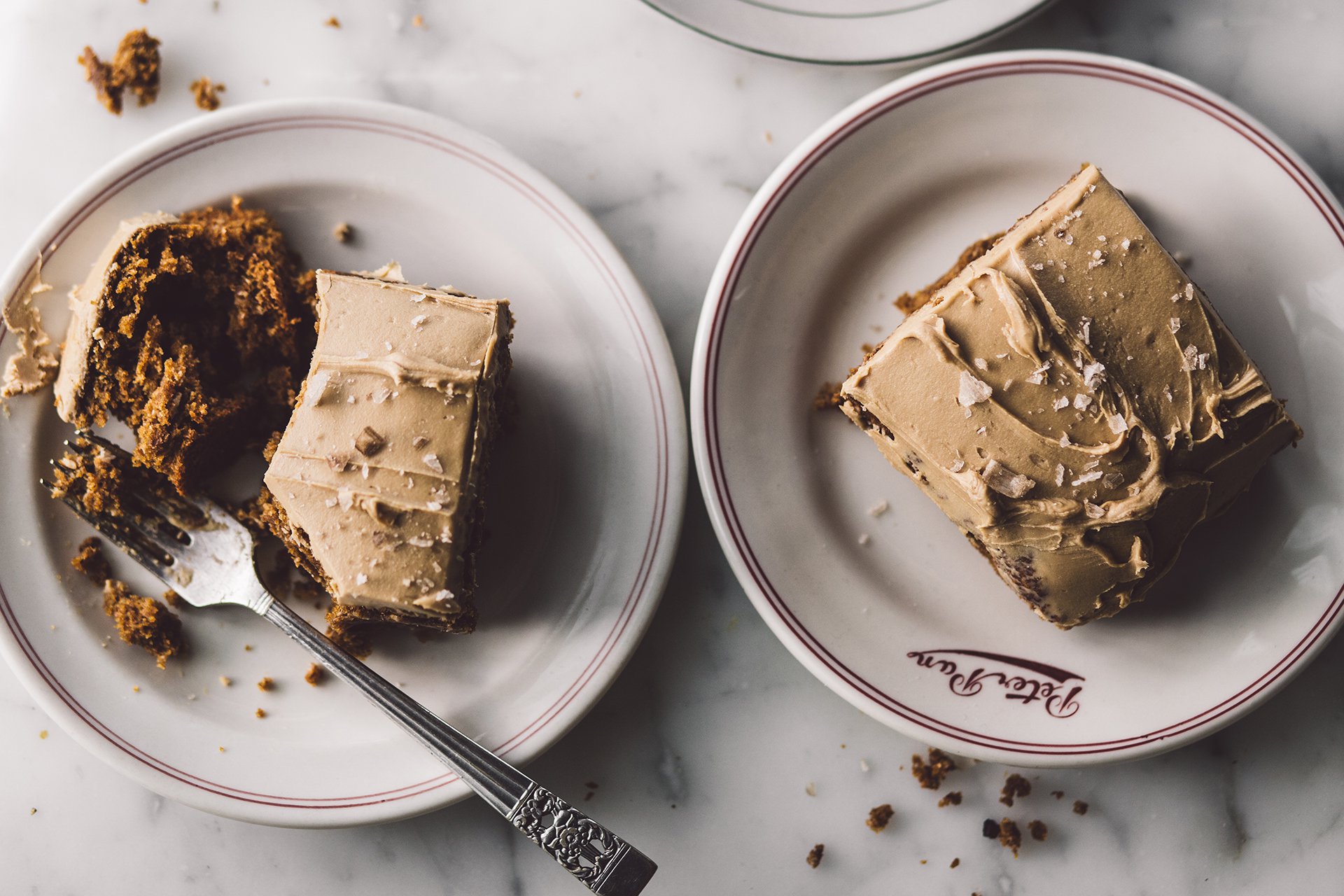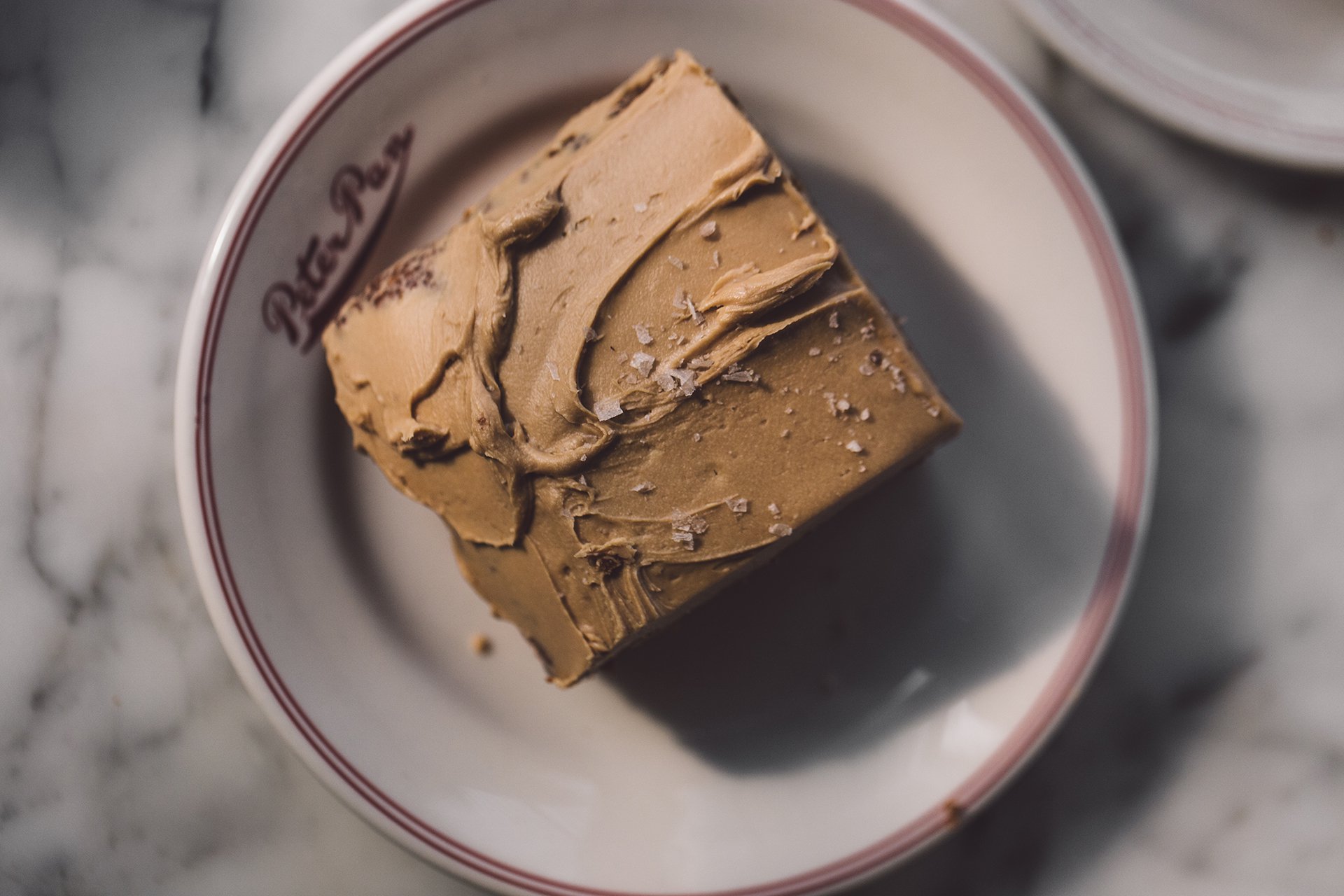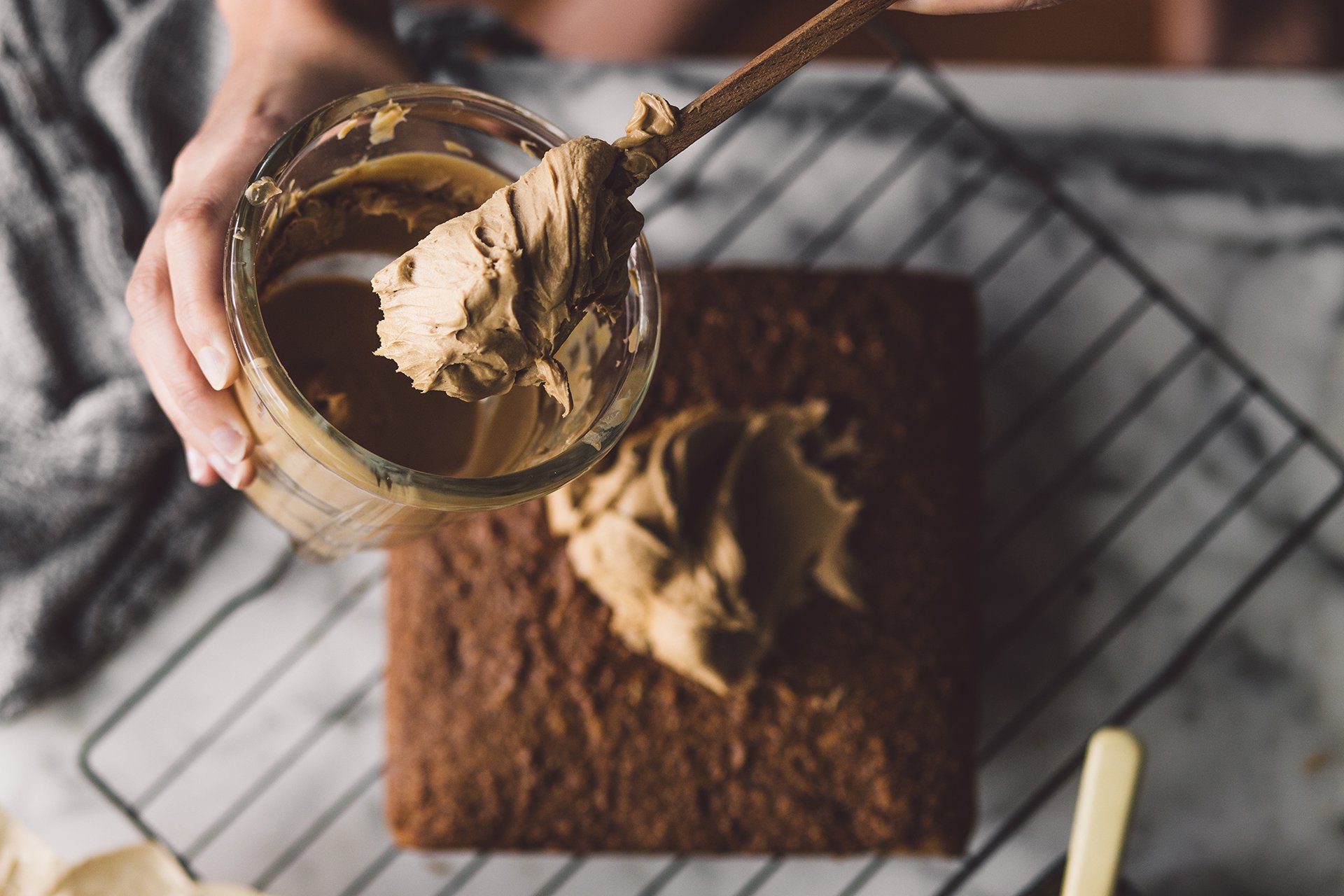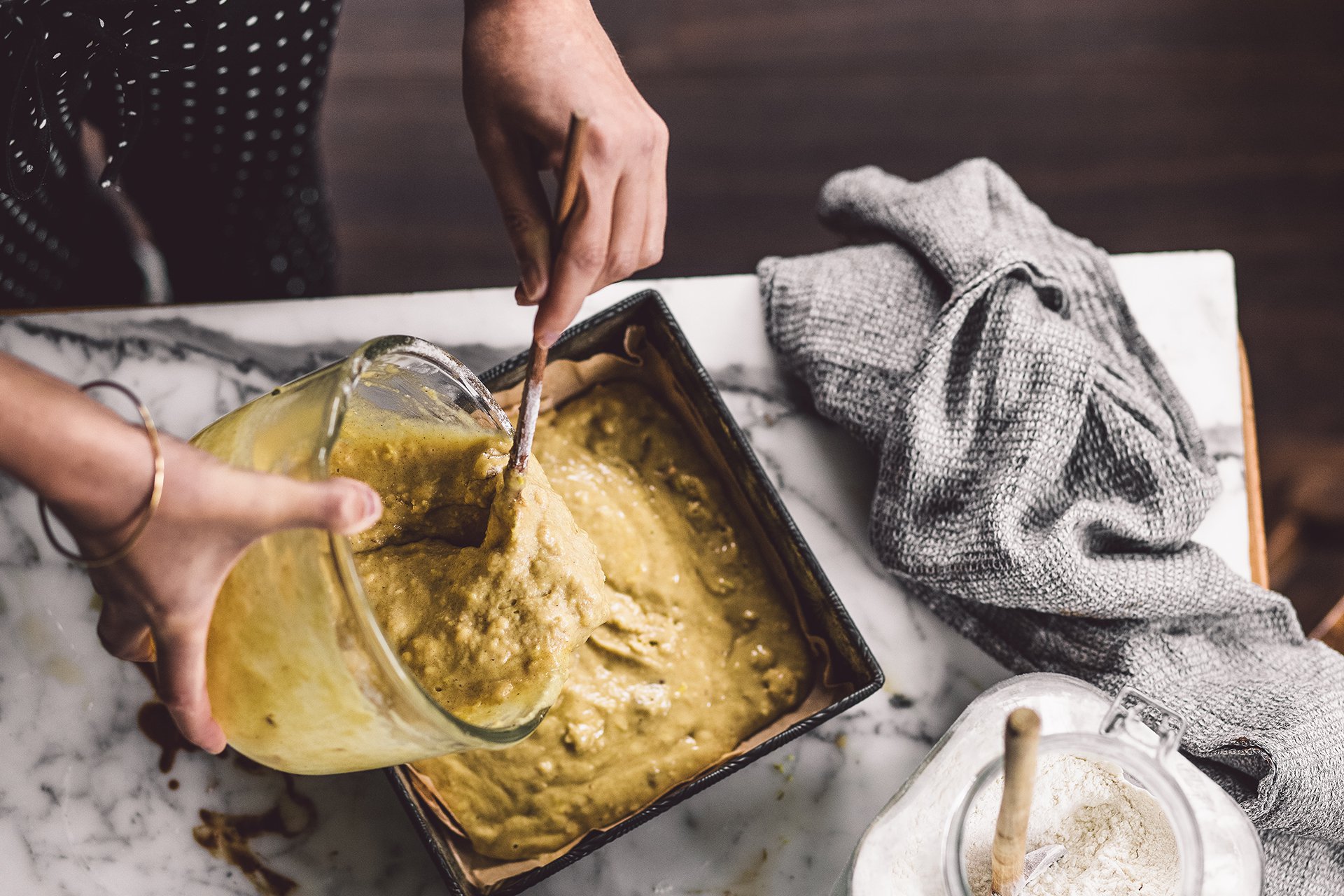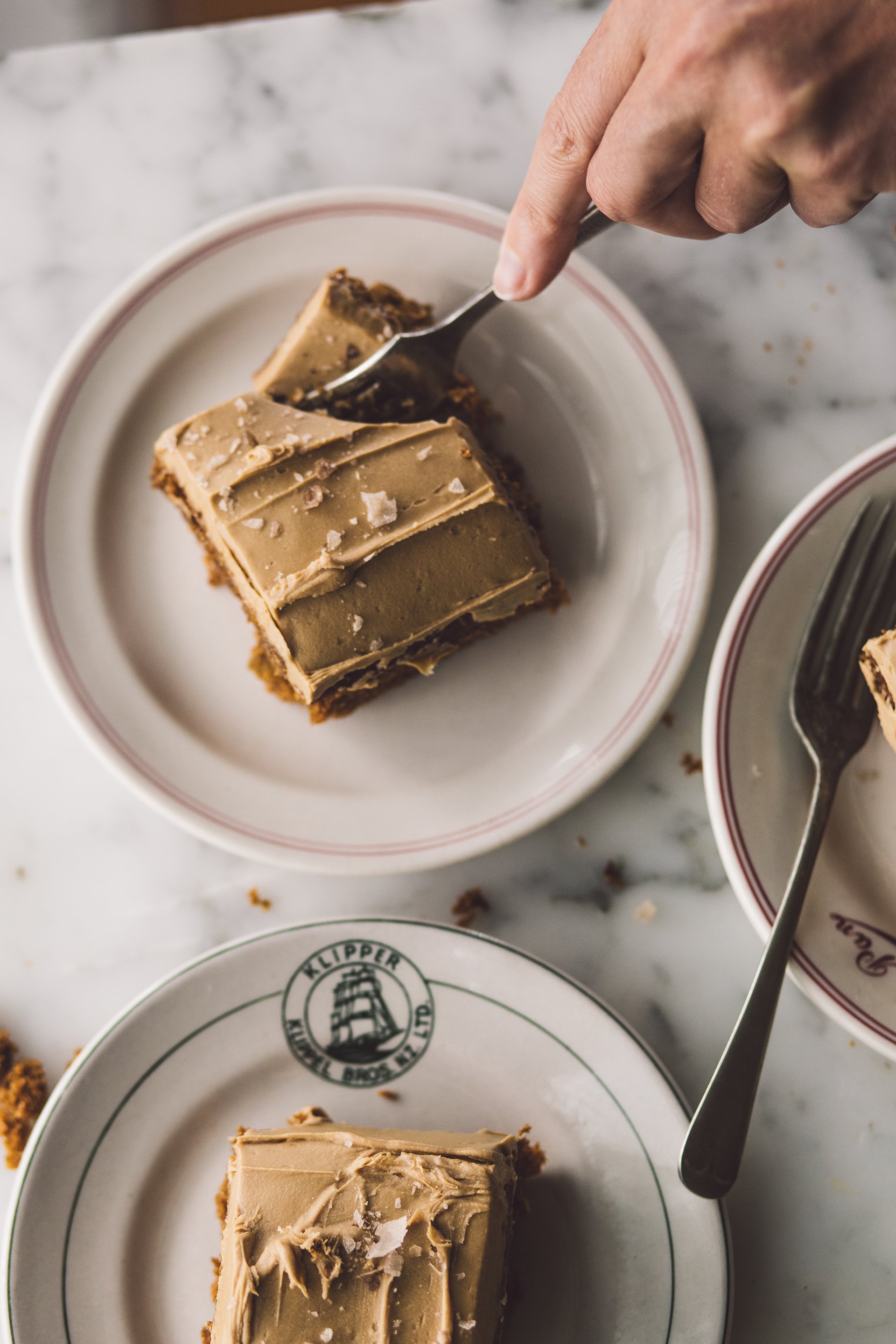Vegetable oil
Fat is essential in baking. Vegetable oil contains fat, so it is equally important. It influences colour, flavours and emulsifies the cake — meaning it helps ingredients bind. Vegetable oil also helps the cake becomes moist by reducing gluten formation. In baking, an ideal vegetable oil is judged by tolerance to high heat, creating no smoke or extra flavours. What you'll want to look for in vegetable oils is high in mono-unsaturated fat and low in poly and saturated fat content — and ideally Omega 3. Since oils are frequently used for cooking and baking, we also look for a balance between accessibility and flavour. Neutral vegetable oils such as rapeseed (canola) oil, light olive oil or coconut oil are among our favourites, because of an adequate balance between fat and taste. Despite its high level of saturated fat, we still use coconut oil when the recipe calls for it. That said if you are watching your fat intake flaxseed and water — often used as a vegan egg substitute offer an alternative. This makes for denser cake — though we never tried so I can’t vouch switching oil for flaxseeds will work. Let us know what happens.
Plant-based milk
Bonus, as there is no milk in this recipe. Still, milk is often found in vegan baking. Standard milk plays an important role in baking, moisturises the batter to enable chemical reactions to happen between ingredients. Milk is easy to replace in vegan baking but we find that the recurrent issue with plant-based milk is a lack of raw ingredients, thus protein and fat. These two nutrients are essential in baking, the first adds structure to the batter, capable of withstanding the heat while in the oven, and avoid collapsing. On the other hand, the fat tenderises and moisturises the cake, and flavours the batter.
Depending on the type of milk you’re using, a change of taste or texture might occur, albeit differences are minor. For this vegan cake, we used Nutty Bruce almond milk. It was the best brought-store milk we could find at the time, with approximately 10% of almonds. Now with more options available, Oatis oat milk, or any organic plant-based milk containing over 7% of raw ingredients, like almond, coconut or oats are our go-to’s. Some people also appreciate soy milk, the most acidic plant-based milk, a property working well with baking soda. Again, a minimum of 7% of soy is necessary for the milk to be suitable for baking. Another option is home-made blend, oats or coconut milk. The advantage of making your own plant-based milk, beyond being cheaper, is that you can adjust the water volume, the amount of raw product, creaminess, and so fat and protein. Finally, we recommend avoiding any type of rice milk. With about 2 grams of fat and only 1 gram of protein, this milk is light, not really suitable for baking — you would end up with a crumbled cake. Better to reserve for pudding or custard.
